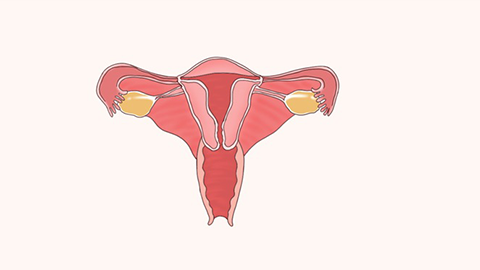What causes cysts in the uterus?
Generally, the main causes of uterine cysts include unruptured physiological follicles, blocked cervical gland ducts, chronic cervicitis, endometriosis affecting the uterus, and pelvic adhesions compressing the uterine gland ducts. If symptoms such as lower abdominal heaviness or menstrual irregularities occur, it is recommended to seek timely medical consultation and treatment at a reputable hospital. Detailed explanations are as follows:
1. Unruptured Physiological Follicles
Women of childbearing age undergo periodic ovulation, and if a follicle fails to rupture and continues to grow, it may form a physiological cyst, sometimes mistaken as a uterine cyst. This condition typically requires no special treatment. Maintaining regular作息 (作息 means作息 in Chinese, which can be translated as作息 habits or作息 patterns)作息 habits, avoiding excessive fatigue, and the cyst usually disappears spontaneously within 1-3 menstrual cycles.
2. Blocked Cervical Gland Ducts
The gland ducts in the cervix secrete mucus, and if the duct openings become blocked, the mucus cannot be discharged and may accumulate forming cervical cysts, a common type of uterine-related cyst. It is important to maintain external genital hygiene, avoid unclean sexual practices, and reduce the risk of cervical infection. Small cysts can simply be monitored with regular follow-up examinations.

Long-term chronic cervicitis can irritate the cervical gland ducts, leading to narrowing or blockage of the ducts and subsequently forming cervical cysts. Under a physician's guidance, medications such as azithromycin dispersible tablets, cefixime capsules, and metronidazole suppositories may be used to control inflammation and relieve symptoms.
4. Endometriosis Affecting the Uterus
If endometriotic lesions involve the uterus, they may affect local tissue metabolism and promote cyst formation. Under medical guidance, medications such as drospirenone ethinylestradiol tablets, dydrogesterone tablets, and gestrinone capsules can be used to inhibit the growth of ectopic endometrium and alleviate symptoms.
5. Pelvic Adhesions Compressing Uterine Gland Ducts
Pelvic adhesions can compress gland ducts around the uterus, blocking the discharge of secretions and resulting in cyst formation. Mild adhesions can be relieved through heat application, physical therapy, and other methods. Severe cases require surgical lysis after medical evaluation, and postoperative use of cefuroxime axetil tablets may help prevent infection.
In daily life, it is important to maintain good hygiene habits, frequently change underwear, avoid multiple intrauterine procedures to reduce injury to the uterus and cervix, maintain regular作息 habits, enhance physical resistance, and undergo regular gynecological examinations to promptly detect and manage abnormalities such as cysts.




